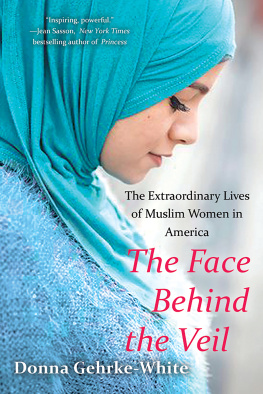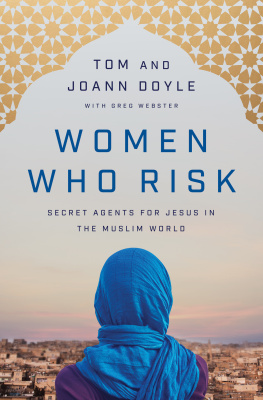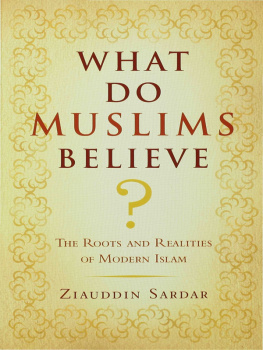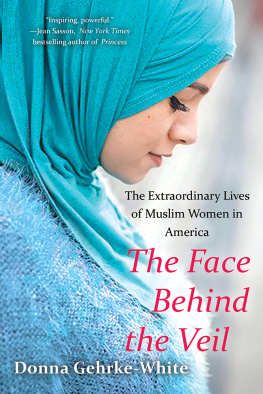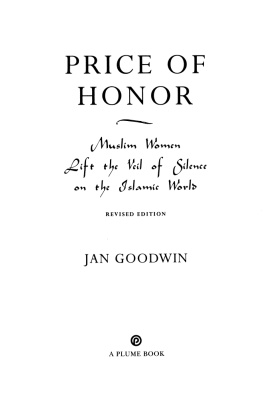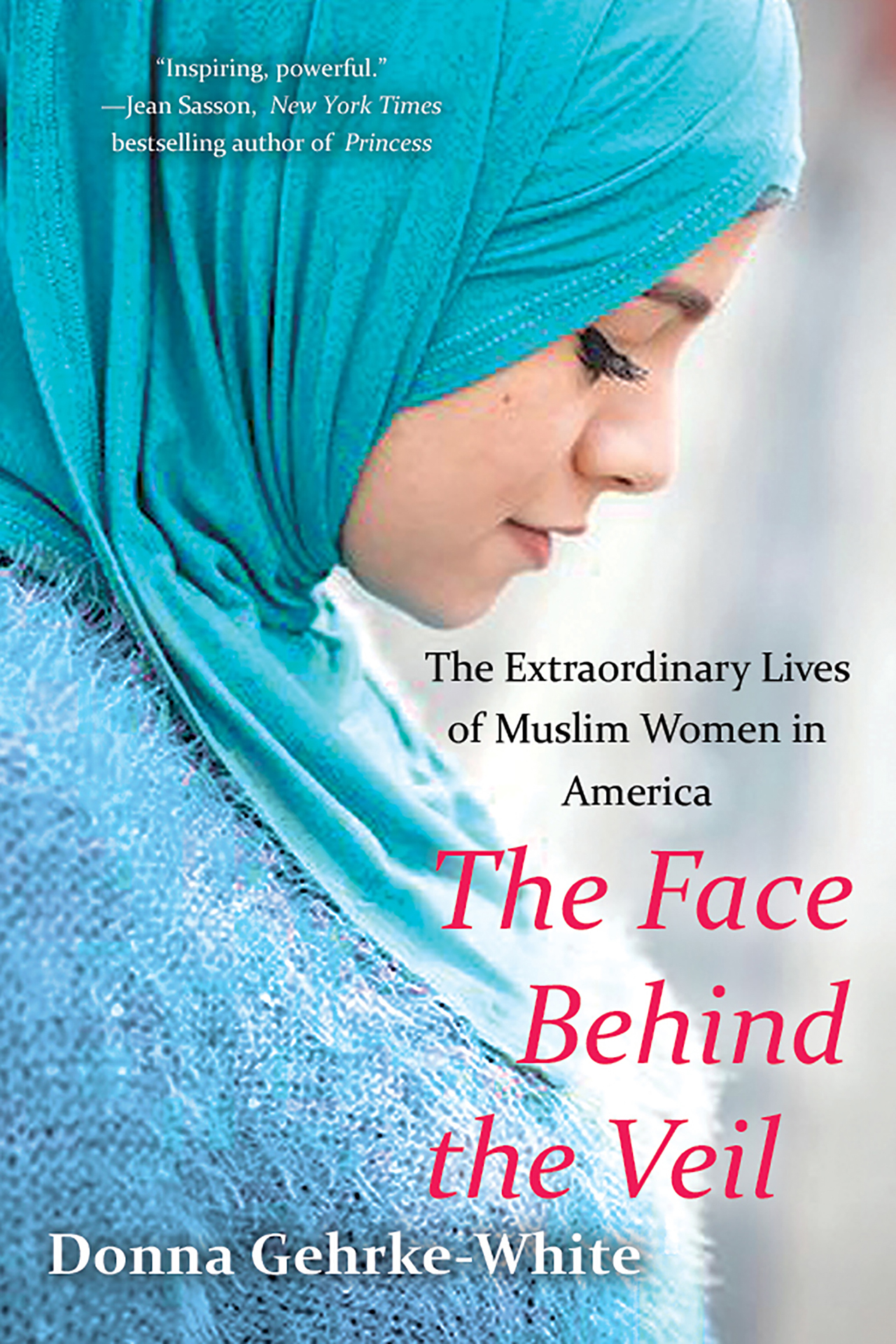T HE F ACE B EHIND THE V EIL
The Extraordinary Lives of Muslim Women in America
DONNA GEHRKE-WHITE

CITADEL PRESS
Kensington Publishing Corp.
www.kensingtonbooks.com
Thanks Tim, Nick and Alex
for being there
Preface
L ike so many other reporters who covered religion, I was asked to write about Muslims after the terrorist attacks of September 11, 2001. Mohammad Shakir, executive director of the Miami-Dade Asian-American Advisory Board, recommended that I examine a trend he had seen: More Muslim women were taking up wearing the traditional Islamic head covering known as a hijab even though in America such apparel is still relatively rare. His own daughter, a law student in Michigan, was one of those New Traditionalistseven though her sister and mother didnt wear a covering in public.
I took Mohammad up on his suggestion and became fascinated with the women I met. They were devout Muslims, but also educated career women, including a doctor, medical lab director, social worker, and teacher. For one story in particular, I interviewed a Muslim student at the University of Miami who didnt wear any covering, yet strongly identified with Islam. She and the others who didnt wear a hijab had found a way to adapt to those aspects of Islamic tradition that suited them, managing to meld their old religion with the high-tech America we live in today.
The spiritual journey these women took fascinated me. It might lead them to different practices but they still prayed to Allah. Many are helping transform the mosque into a place of worship that fully includes women. They are Americanizing it into a place where potluck dinners, Brownie troop meetings, and even self-help sessions can be heldthe kinds of programs American churches and synagogues already offer.
Even with anti-Muslim sentiment running higher in the United States than ever before, these women persist with their faith. They wear their veils despite catcalls; they attend mosque despite being segregated from men. Indeed, Islam is flourishing, with new mosques opening every year. While many American women are pushing for reforms within the mosque, they still dont give up their faith. In Islam, they find solace.
I set out to find out why this is so, and who these women are.
Acknowledgments
T his book would never have been written had it not been for the many patient Muslim women who answered my questions. Thank you, ladies, for sharing with me your lives. Special thanks to Anisah David for telling not only her story but her daughters, but also for helping me find other fascinating Muslimah and offering invaluable suggestions as I wrote the book. Sakeena Mirza, Sireen Sawaf, Okolo Rashid, and Deedra Abboud also pitched in to recommend contacts for the book. Zainab Elberry, Ingrid Mattson, and Luby Ismail did that, as well as furnish invaluable background information about Islam and Muslims in America. I also need to thank Zuly Martinez, who shared with me her extraordinary photographs of Muslim women.
Mukit Hossain both recommended likely subjects and helped set up interviews. He also helped me locate important research materials that helped me understand the anxieties of American Muslim women in the wake of the September 11 terrorist attacks, especially those women who had been detained or had their homes searched by federal agents. Mohammad Shakir, executive director of the Miami-Dade Asian-American Advisory Board was also extremely helpful with my research. Jawaad Abdul Rahman of Unity Productions Foundation, Ibrahim Hooper of the Council on American-Islamic Relations, and Helen Samhan, director of the Arab American Institute Foundation were invaluable in recommending fascinating women. Professor John G. Douglass at the University of Richmond School of Law was also helpful in his research on how Muslim charities and private homes became objects of scrutiny by government agents. A book like this could not have been written without these experts help.
I am also especially indebted to Dr. Ihsan Bagby of the University of Kentucky for his important research on Muslims in America, which I quote throughout the book. Special thanks also to Mohiaddin Mesbahi, an associate professor of International Relations at Florida International University, and Stephen Sapp, chairman of the Religious Studies Department at the University of Miami. Early on, when I was writing my first article on Muslim women for the Miami Herald, they helped send me on the right path.
Rosalind Rivera, the executive director of the Arizona Refugee Community Center, opened her doorsand heartto me. She arranged for me to interview several women and provided excellent interpreters.
It goes without saying a book like this needs a nurturer, and I thank Kensingtons editor in chief, Michaela Hamilton, for her excellent suggestions. I want to thank her for sharing my excitement about these fascinating Muslim women and for her patience in working with me as I sorted through my research and interviews.
This book simply wouldnt exist without my agent, Agnes Birnbaum. Everyone should have someone like her in their lives. Thanks, Agnes, for always inspiring me.
Finally, thanks to Miami Herald editors Teresa Mears, Joan Chrissos, and Kathy Foster. They not only gave me encouragement but granted me a leave of absence to work on the book. Teresa also kept busy forwarding to me stories on Muslim women and Islamic trendseven giving me computer tips. Herald photographer Marsha Halper was a godsend as she helped gather pictures for the book.
For numbers-crunching, the State Departments Amanda D. Rogers-Harper was invaluable in providing data on the latest number of refugees arriving in the United States.
Heartfelt thanks to a patient editor: my husband, Tim White. He helped expunge my foibles out of the book and made it better. Nick and Alex, you were great in overlooking your moms absentmindedness during the long months of writing.
Finally, thanks to the many who kept encouraging me to hang in there and finish The Face Behind the Veil .
T HE F ACE B EHIND THE V EIL
I NTRODUCTION
A J APANESE A MERICAN raised in a Louisiana fundamentalist church calls herself a Muslim. So do an award-winning teacher, a former drug-addicted prostitute turned counselor, a New York lawyer, a Nashville feminist, a Florida doctor, and a group of Afghan refugees in Phoenix who are learning to read for the first time.
They are all Muslim women in America, or as they call themselves, the Muslimah . They hail from at least seventy-seven countries. Thousands of women in America, from every ethnic group, convert to Islam. Indeed, the United States has the most diverse Muslim population in the world.
Todays American Muslimah come from posh Los Angeles suburbs, African refugee camps, rural South Dakota, Beirut high rises, the Iraqi desert, and a city on the Adriatic Sea. Some are learning to use electricity and plumbing for the first time. Others are middle-class, car-pooling moms, or human rights leaders advising the White House.
There are those who stand out. The African immigrants wearing their turban-like headdresses, the Asian Americans in their flowing scarves, the Middle Easternborn women in their veils, the converts opting for their own styles, some going for the most dramaticthe head-to-toe burqas. Most American Muslimah , however, are not so easily spotted. They dont wear any kind of head covering that would identify them as Muslims. They blend into the American fabric.

